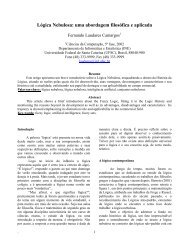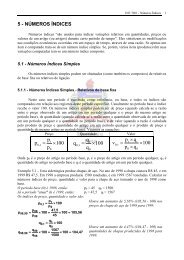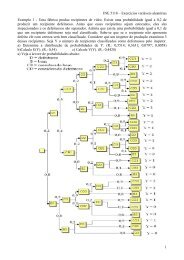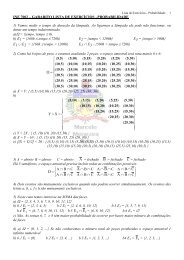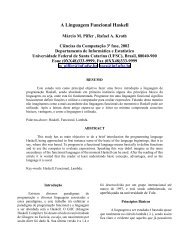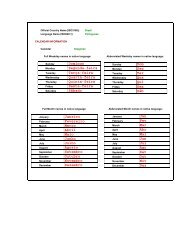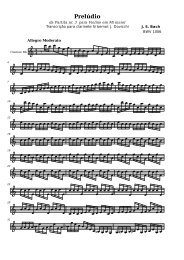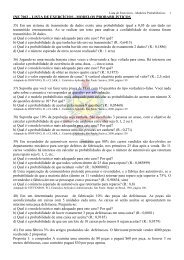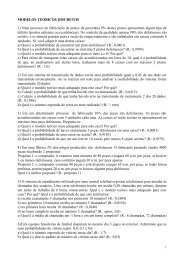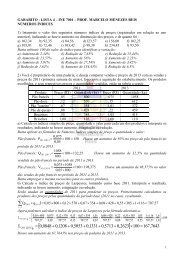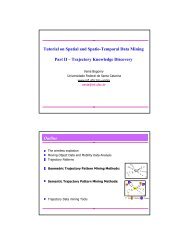Anais do IHC'2001 - Departamento de Informática e Estatística - UFSC
Anais do IHC'2001 - Departamento de Informática e Estatística - UFSC
Anais do IHC'2001 - Departamento de Informática e Estatística - UFSC
Create successful ePaper yourself
Turn your PDF publications into a flip-book with our unique Google optimized e-Paper software.
36<br />
<strong>Anais</strong> <strong>do</strong> IHC’2001 - IV Workshop sobre Fatores Humanos em Sistemas Computacionais<br />
Analyzing HCI in Multiple Environments: A Case Study<br />
Simone Diniz Junqueira Barbosa, Clarisse Sieckenius <strong>de</strong> Souza, Gilda Dahis<br />
<strong>Departamento</strong> <strong>de</strong> <strong>Informática</strong>, PUC-Rio<br />
Rua Marquês <strong>de</strong> São Vicente, 225<br />
Gávea, Rio <strong>de</strong> Janeiro, RJ 22453-900<br />
{sim, clarisse, gilda}@inf.puc-rio.br<br />
Abstract. As the computer industry moves towards universal accessibility, with a<br />
wi<strong>de</strong> variety of interactive <strong>de</strong>vices and environments, the need for specific<br />
research in HCI analysis and <strong>de</strong>sign for multiple environments grows<br />
accordingly. In this paper, we investigate some communicative aspects of<br />
interactive applications, borrowing concepts from communication-related<br />
disciplines. Our goal is to take the first steps in coupling lessons learned in these<br />
disciplines with a theoretical study of HCI, in or<strong>de</strong>r to <strong>de</strong>vise a framework of<br />
analysis that can be applied to diverse environments.<br />
Keywords: multiple-environment interfaces, interaction mo<strong>de</strong>l, discourse<br />
structure, pragmatics, HCI analysis, semiotic engineering<br />
1. Introduction<br />
Over the last few years, we have been watching the computer industry <strong>de</strong>velop an everincreasing<br />
variety of interactive environments and <strong>de</strong>vices, in an attempt to reach the<br />
largest possible number of users, and thus move towards universal accessibility. The wi<strong>de</strong><br />
range of input and output capabilities brings about an urgent need for specific research in<br />
HCI analysis and <strong>de</strong>sign for multiple environments. On the one hand, we have<br />
environments with diverse characteristics, each <strong>de</strong>manding a particular HCI treatment. On<br />
the other hand, we often need to provi<strong>de</strong> the same services and systems across<br />
environments, which requires a more integrated approach to multiple-environment HCI<br />
analysis and <strong>de</strong>sign.<br />
Most interaction mo<strong>de</strong>ls used in HCI focus on the grammatical aspects of wellbehaved<br />
interaction. Some researchers have also provi<strong>de</strong>d gui<strong>de</strong>lines that aim at achieving<br />
successful interaction. However, most of them have not taken advantage of the<br />
communicative aspect of interactive software, and have not looked into linguistic or<br />
semiotic literature for investigating the similarities between HCI and these fields. For<br />
instance, Linguistics has long investigated the complementary roles of grammar and<br />
pragmatics in language, as we can see in the following excerpt:<br />
“Language consists of grammar and pragmatics. Grammar is an abstract<br />
formal system for producing and interpreting messages. General<br />
pragmatics is a set of strategies and principles for achieving success in<br />
communication by the use of grammar.” (Leech, 1983:76)<br />
Viewing interaction from a communicative perspective, we could try to use studies from<br />
other communication-related fields to provi<strong>de</strong> a theory of HCI, which is mostly an applied<br />
field of research. One such theory has come forth un<strong>de</strong>r the name of Semiotic Engineering



